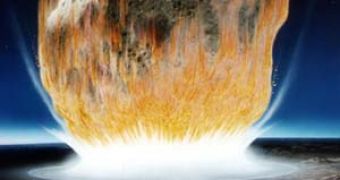NASA's internal procedure for tracking potentially dangerous asteroids that could hit Earth and for countermeasures designed to deflect the space objects is deeply flawed and heavily criticized because it exaggerates the cost and difficulty of the program.
The agency had one year to prepare plans for a survey that would catalog 90% of all potentially hazardous near-Earth objects at least 140 meters across (460 ft), but in March they delivered only a 27-page sketch with no detailed analysis, budget or implementation plans.
The extraordinarily "scientific" document only recommends the continuation of the annual $4.1 million search program. Unless they have other means of information about incoming asteroids, this means that they're very confident that no large asteroid is ever going to hit Earth.
A longer, 271-page analysis that led to the report was not published and circulated only to study group members and labeled "final report" - a mistake a NASA spokesman blamed on "stupidity". He said the agency "had decided a short, concise report would be more helpful than a detailed one, and that the agency is waiting for direction - and a budget - from Congress and the Administration."
Clark Chapman of the Southwest Research Institute in Boulder, Colorado, estimates that a project to track down asteroids as small as 140 meters (460 ft) would cost $820 million for a survey using ground-based instruments, or $1.0 to $1.3 billion using a dedicated infrared telescope in an orbit near Venus, which could reach the survey goal three years faster and would be more sensitive.
But he's criticizing NASA for the lack of interest: "They didn't study the case of a multi-decade warning of a 100-meter object," which are considered to account for some 95% of potential impacts and could be deflected over long periods of time using gravity tractors.
The gravity tractors could be a good solution, consisting of spacecraft that would fly next to asteroids and nudge them off course using the craft's own gravity, or space tugs, which could gently push the space rocks into safer orbits.

 14 DAY TRIAL //
14 DAY TRIAL //